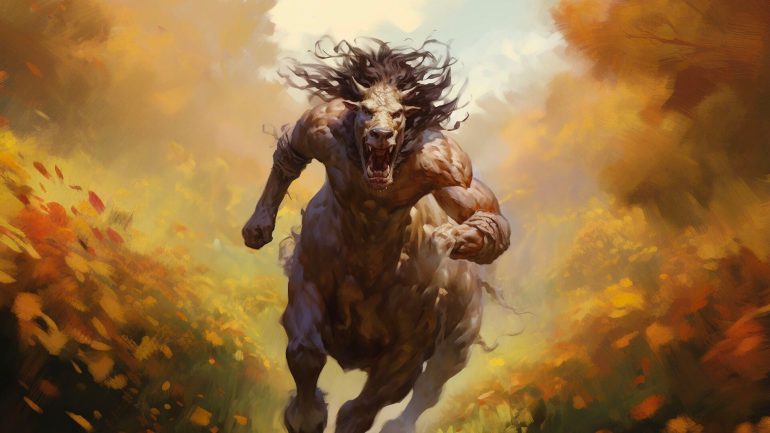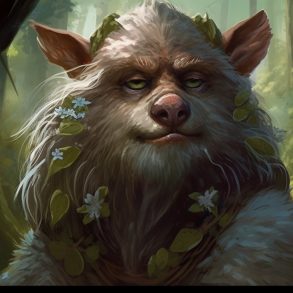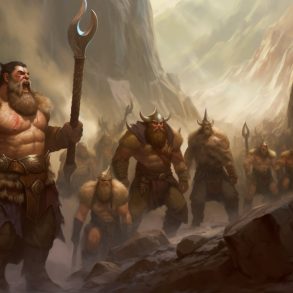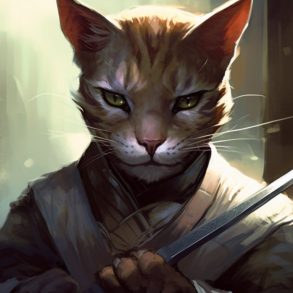Tall, powerful folk that have been both friend and foe in many fictional works over the years and, one of the more unusual player race options. The Centaur race was first published in Guildmaster’s Guide to Ravnica (GGR) and later republished in another Magic: The Gathering setting, Mythic Odysseys of Theros (MOT). An updated version was more recently published in Mordenkainen Presents: Monsters of the Multiverse (MPMM), this is a separate version and does not overwrite the original, it just presents a different way of playing a centaur using more current design conventions.
Pony up
The appearance of centaurs varies depending on the plane they come from; the Centaurs of Ravnica resemble muscular humans from the waist up, whilst in other parts of the multiverse their upper halves resemble elves. Their lower halves also vary, some bear the strong legs of a draft horse whilst others have more slender, nimble legs like a mustang. The hides of some centaurs bear markings that they choose to mirror on their humanoid half with tattoos and paints, and others choose to express themselves by styling their hair and tails in similar manners.
No matter where they are found, centaurs have an innate connection and affinity for nature. They are drawn to open spaces loving to run through them, even if all they have access to is an expanse of rubble. They organize themselves into clans, their traditions, and communities an extension of their respect for nature, and to whom they are fiercely loyal.
On your high horse: Playing a Centaur
Playing a centaur gives you the following traits:
Ability Scores – Str +2 Wis +1
Size – Medium
Creature Type – Fey
Speed – 40 ft.
Age – Centaurs mature and age at about the same rate as humans.
Charge – If you move at least 30 feet straight toward a target and then hit it with a melee weapon attack on the same turn, you can immediately follow that attack with a bonus action, making one attack against the target with your hooves.
Hooves – Your hooves are natural melee weapons, which you can use to make unarmed strikes. If you hit with them, you deal bludgeoning damage equal to 1d4 + your Strength modifier, instead of the bludgeoning damage normal for an unarmed strike.
Equine Build – You count as one size larger when determining your carrying capacity and the weight you can push or drag.
In addition, any climb that requires hands and feet is especially difficult for you because of your equine legs. When you make such a climb, each foot of movement costs you 4 extra feet, instead of the normal 1 extra foot.
Survivor – You have proficiency in one of the following skills of your choice: Animal Handling, Medicine, Nature, or Survival.
Languages – You can speak, read, and write Common and Sylvan.
Extra Horsepower: Playing an MPMM Centaur
Playing a centaur from MPMM gives you the following traits:
Ability Scores – You can increase one ability score by 2 and a different score by 1, alternatively you can increase three different ability scores by 1.
Size – Medium
Creature Type – Fey
Speed – 40 ft.
Age – The typical life span of a player character in the D&D multiverse is about a century, assuming the character doesn’t meet a violent end on an adventure.
Charge – If you move at least 30 feet straight toward a target and then hit it with a melee weapon attack on the same turn, you can immediately follow that attack with a bonus action, making one attack against the target with your hooves.
Hooves – Your hooves are natural melee weapons, which you can use to make unarmed strikes. If you hit with them, you deal bludgeoning damage equal to 1d6 + your Strength modifier, instead of the bludgeoning damage normal for an unarmed strike.
Equine Build – You count as one size larger when determining your carrying capacity and the weight you can push or drag.
In addition, any climb that requires hands and feet is especially difficult for you because of your equine legs. When you make such a climb, each foot of movement costs you 4 extra feet, instead of the normal 1 extra foot.
Survivor – You have proficiency in one of the following skills of your choice: Animal Handling, Medicine, Nature, or Survival.
Languages – You can speak, read, and write Common and one other language that you and your DM agree is appropriate for your character.
We hope that you’ve enjoyed running through the open plains with the centaur as much as we did. Have you played a centaur yet? Are you planning to? If you want to learn more about other race options, check out our races section, or if you want to understand the world’s greatest roleplaying game better, then check out our how to play section. Good luck out there adventurers and, until next time, canter on.






